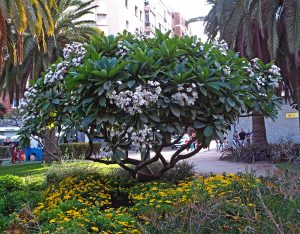
Plumeria is a genus of eleven species of shrubs and small trees in the dogbane family (Apocynaceae) native to tropical America from Brazil to Mexico and the Caribbean. With common names of plumeria and frangipani, a few species and hybrids are grown as ornamentals in tropical and sub-tropical areas worldwide for the attractive and fragrant flowers. The name frangipani comes from the name of a 16th century Italian nobleman who created a perfume with a similar scent. Now commonly naturalized in Asia and Pacific Islands, they are often planted in cemeteries or around both Hindu and Buddhist temples. There are hundreds of named varieties. The different species have distinct forms and growth habits. P. rubra is the national flower of Nicaragua, while P. alba is the national flower of Laos (despite being an introduced plant there).
Plumeria have widely spaced, thick succulent but brittle branches with thin grey bark and a milky sap that can irritate the eyes and cause dermatitis in susceptible individuals. Elongate leathery or fleshy leaves are borne in clusters near the branch tips.

The alternate leaves may be round or pointed on the tips, smooth or corrugated, and glossy or dull green. Depending on the species or cultivar, plumeria plants may be upright and compact, or open and sprawling. There are dwarf types with evergreen foliage, but the flower quality tends to not be as good. The P. rubra types are deciduous, while P. obtusa and other white-flowered species are evergreen. These plants only branch after flowering or injury.
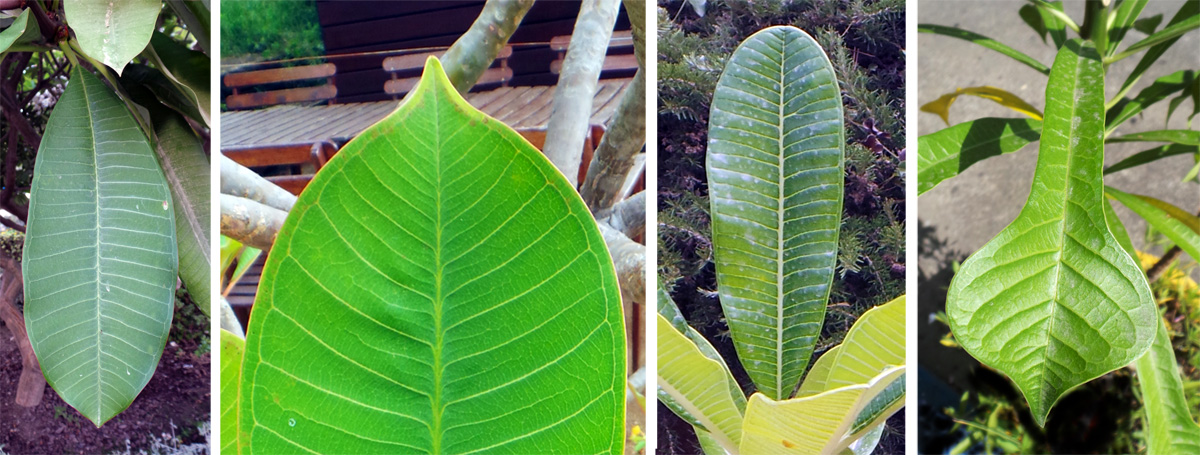
Waxy, 2- to 4-inch tubular flowers are borne in terminal clusters on the ends of the stems from early summer until fall. The five rounded overlapping petals may be broadly to narrowly oval.

Flower colors include pink, red, white, and yellow, or pastel bicolors. The flowers are very fragrant, with a scent including hints of jasmine, citrus, and gardenia. Since they are pollinated by night-flying sphinx moths, the flowers really begin to release their fragrance in the evening, but they can still have a lovely floral scent at other times. The flowers are used for making leis on many Pacific Islands. The number of flowers per cluster varies greatly, with some cultivars producing as many as 200 flowers and others as few as 50 over a period of months. The percentage of branch tips that will set flowers also varies considerably from 10-60%, with compact plants generally blooming more heavily than more leggy plants. And peak bloom time and number of subsequent flushes of flowers also varies by cultivar.

If pollinated, a flower of the species can produce a two-horned seed pod. The hard, leathery, cylindrical follicles grow up to 8 inches long with pointed ends. When mature, they split along the length of the pod to release the 20-60 winged seeds, usually in early spring. Cultivars rarely produce seed pods.

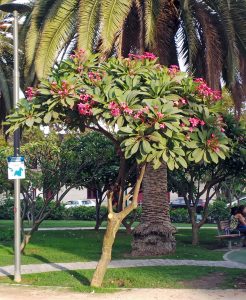
In warm climates plumeria are used as landscape plants where some types can grow more than 30 feet tall. In cold areas, plumeria are best grown in containers to be moved outdoors during warm weather – to be placed on porches or patios where their delightful fragrance can be enjoyed in the summer – and brought indoors when the weather cools in autumn and night temperatures drop to the 40Fs.
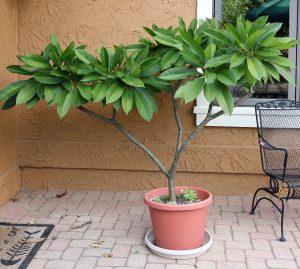
Plumeria need bright sun, warm temperatures, and appropriate moisture to thrive. They need well-drained soil that doesn’t dry out and doesn’t remain soggy. The more light the plant receives, the more water it needs. But over-watering may result in root rot and plant death, so allow the planting medium to dry out between waterings (and reduce the frequency of watering when temperatures are cooler). In containers use a coarse, well-draining potting medium, such as cactus mix or regular potting medium amended with pumice, poultry grit or perlite.
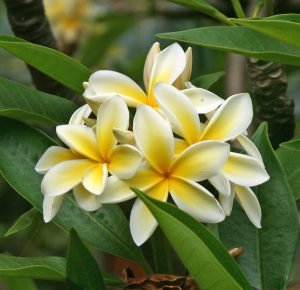
Fertilize frequently during the growing season with a high phosphorus (blossom-booster) fertilizer to encourage flowering, and do not fertilize at other times of the year. These plants don’t usually require pruning, but if it is necessary that should be done in spring before deciduous types leaf out. Plumeria have few problems, but can be infested with common greenhouse pests such as white flies and mealybugs, and are very susceptible to spider mites. Insecticidal soap can be used to control these pests. Repot as needed in late winter, either root-pruning for planting back into the same container, or replant the intact root ball in a larger container.
Plumeria is propagated from seed or stem cuttings (the only way to maintain named selections or cultivars). Take 12-18 inch cuttings of leafless stem tips in spring and allow the cut end to dry before planting in well-drained soil. It will take one to three years for cuttings to bloom and three or more years for plants grown from seed. Seed is not readily available (other than collected from a tree), and flower color and quality may not be the same as the parent tree, although white, red and yellow-flowered types generally produce seedlings of the same color as the parent (pinks and multicolored are more likely to produce seedlings in a range of colors).
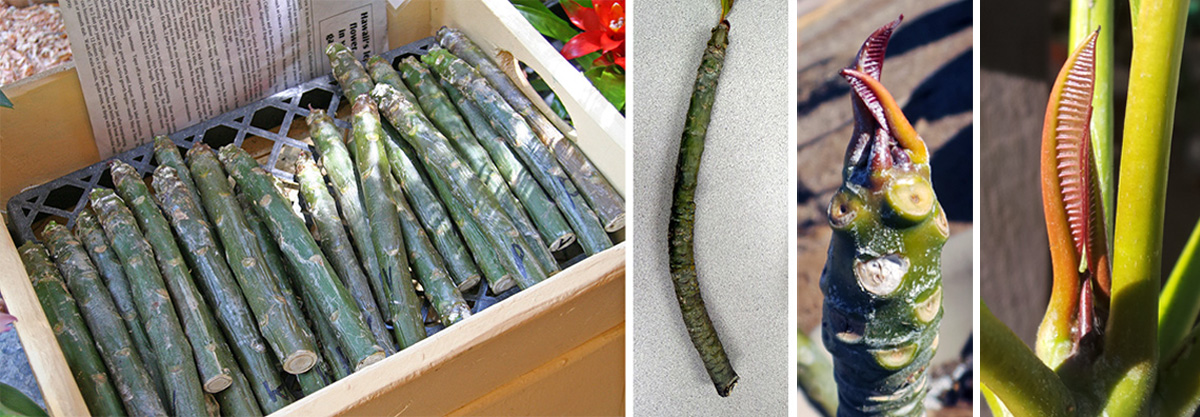
The most commonly grown species of Plumeria – and hybrids of these – include:
- P. alba, white plumeria, generally has white flowers with a yellow center without any tinge of red on the buds or flower stalks. In its native Puerto Rico this plant can grow up to 40 feet tall.
- P. obtusa, commonly called Singapore plumeria but native to the islands of Cuba and Hispaniola, has white or pink flowers with very rounded petals that often are recurved at the tips, evergreen foliage, and leaves that are shiny with rounded ends. The plants tend to be smaller than other types.
- P. pudica has white or pink flowers with rounded petals and evergreen, spoon-shaped leaves that are long and thin, widening out at the end. The plant forms a profusely-branched, medium-sized tree.
- P. rubra (= P. acutifolia, P. tricolor) has red-tinged flowers, buds, or flower stalks. The numerous selections and cultivars may have white, yellow, pink, orange, red, bicolor or multicolored flowers with oval petals that may be recurved or slightly furled. The deciduous, elliptical leaves have pointed ends. They grow into rangy trees up to 25 feet tall.
- P. stenophylla has thin white flower petals with gaps between each petal and long, thin leaves on shrubby plants up to 8 feet tall.
- P. x stenopetala is a hybrid between a P. stenophylla and an unknown plumeria forming a small compact plant, with deciduous long narrow leaves and white flowers with narrow petals.
– Susan Mahr, University of Wisconsin – Madison





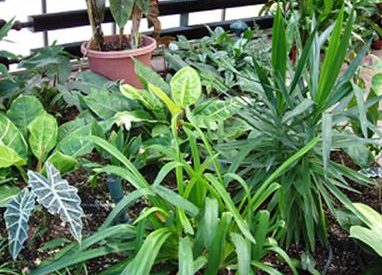 Houseplant Care
Houseplant Care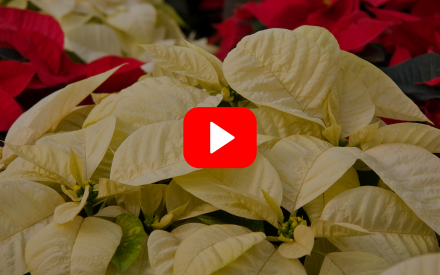 ▶ WATCH: Maintaining Your Festive Houseplants
▶ WATCH: Maintaining Your Festive Houseplants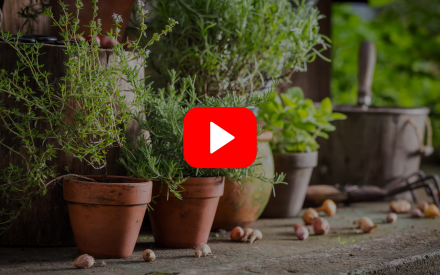 ▶ WATCH: Bringing the Garden Inside
▶ WATCH: Bringing the Garden Inside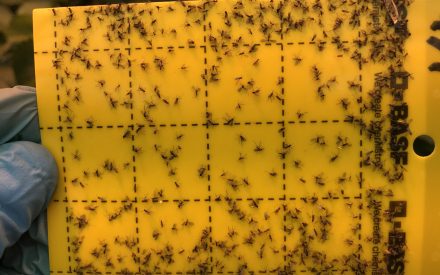 Fungus Gnats on Houseplants
Fungus Gnats on Houseplants


